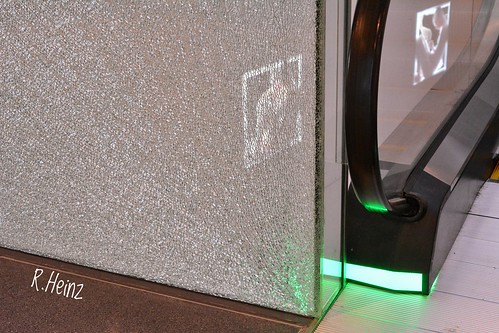Behavioral characterization was carried out to discover features that mimic the scientific attributes explained in CDKL5 dysfunction, which includes seizures, motor habits, and eye tracking. Many physiological substrates ended up examined, including spontaneous and convulsant-induced electroencephalograph (EEG) exercise and visual evoked potentials (VEPs). Anatomical analysis was aimed at identifying aberrant morphological attributes of neurons, which includes cortical neuron dendritic arborization, documented following the developmental knockdown of Cdkl5 in rat [11], in Mecp2 knockout mice [124], and in postmortem samples from MECP2 carriers [15]. Molecular analyses ended up carried out on a number of signaling pathways identified to be altered in Mecp2 knockout mice and believed to be appropriate to Rett Syndrome. Finally, we utilized a conditional knockout strategy to map the behavioral attributes discovered to distinctive populations of forebrain neurons. Our conclusions disclose a collection of behavioral phenotypes homologous to people explained in CDKL5 problem and exhibit the underlying neuronal mobile-varieties and mind locations. In addition, our knowledge expose typical deficits in a distinct signaling pathway in Cdkl5 and Mecp2 knockout mouse designs, suggesting potentially overlapping molecular deficits in CDKL5 disorder and Rett Syndrome.
Mice ended up anesthetized (Avertin, Sigma-Aldrich, St. Louis, MO) and perfused transcardially with 4% paraformaldehyde at 2 months of daily life. Brains were eliminated from the cranium and put up-mounted overnight at four C. Coronal sections (60 and 250 mm for immunofluorescence and neuronal reconstruction, respectively) have been minimize on a vibratome (Leica Microsystems, Mannheim, Germany) in .one M phosphate buffer. For immunofluorescence mind sections have been LOR-253 supplier washed in phosphate-buffered saline .five% Triton-X and transferred in a 15 mM sodium citrate resolution, pH eight. for thirty min at 80 C, then washed in phosphate-buffered saline with .5% Triton-X and blocked with blocking buffer (two% BSA in phosphate-buffered saline, a hundred mm glycine, 1% Triton-X), incubated with major antibodies overnight at four C (rabbit antiCdkl5, one:250, Sigma-Aldrich mouse anti-SC35, 1:20, rabbit antiMeCP2, 1:a thousand, Mobile Signaling, Danvers, MA), incubated with an acceptable Alexa Fluor secondary antibody (1 h at area temperature), stained with DAPI, and mounted in Moviol (Calbiochem, Nottingham, British isles). Pictures have been obtained on a confocal microscope (TCS SP5 AOBS, Leica Microsystems). For neuronal reconstruction, brain sections were washed in phosphatebuffered saline, stained with DAPI, and mounted in Moviol (Calbiochem).
All procedures were approved by 23388095The Institutional Animal Care and Use Committee (IACUC) of The European Molecular  Biology Laboratory (EMBL) and ended up executed according to the Italian Ministry of Wellness and commensurate with NIH tips for the moral treatment of animals (NIH publication No. 85-23, revised 2011). All surgical procedure was performed beneath anesthesia with tribromoethanol 250 mg/Kg (avertin). Soon after anesthesia, for refreshing brains collections mice had been sacrificed by cervical dislocation while for fixed tissues collections mice have been perfused transcardially with 4% paraformaldehyde. All efforts had been created to minimize suffering. All mice were taken care of according to protocols accepted by the Italian Ministry of Wellness and commensurate with NIH guidelines for the moral treatment of animals. Mice for tests were made by crossing Cdkl5KO/+ females with Cdkl5KO/Y males and Cdkl5KO/X females with +/Y male. Littermate controls were utilized for all experiments. A portion of the behavioral knowledge derived from knockout mice containing the neomycin assortment cassette.
Biology Laboratory (EMBL) and ended up executed according to the Italian Ministry of Wellness and commensurate with NIH tips for the moral treatment of animals (NIH publication No. 85-23, revised 2011). All surgical procedure was performed beneath anesthesia with tribromoethanol 250 mg/Kg (avertin). Soon after anesthesia, for refreshing brains collections mice had been sacrificed by cervical dislocation while for fixed tissues collections mice have been perfused transcardially with 4% paraformaldehyde. All efforts had been created to minimize suffering. All mice were taken care of according to protocols accepted by the Italian Ministry of Wellness and commensurate with NIH guidelines for the moral treatment of animals. Mice for tests were made by crossing Cdkl5KO/+ females with Cdkl5KO/Y males and Cdkl5KO/X females with +/Y male. Littermate controls were utilized for all experiments. A portion of the behavioral knowledge derived from knockout mice containing the neomycin assortment cassette.
